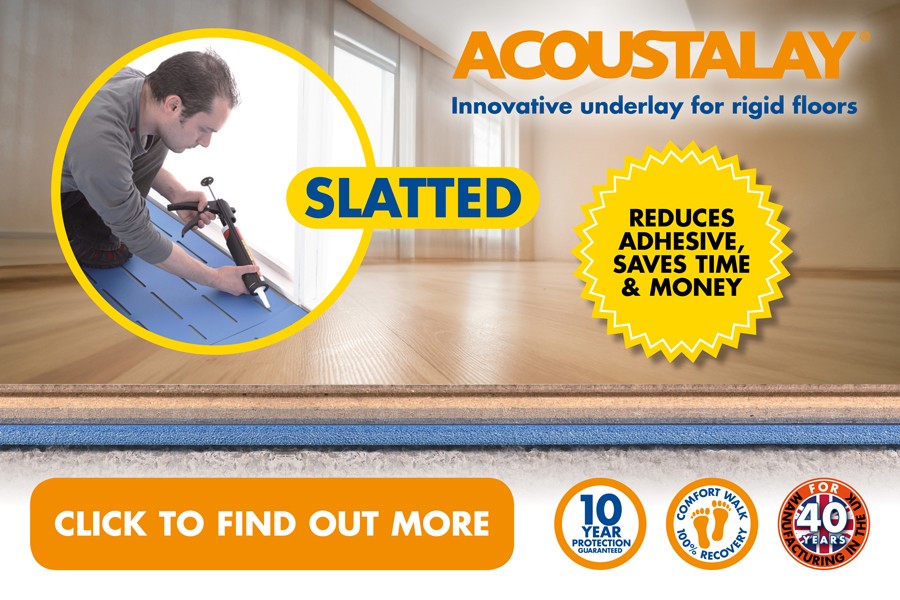A key benefit which flowing screeds have over traditional sand:cement screeds and also over self-compacting concrete ‘screeds’ is their sustainability advantages. Keith McGrath outlines some of their benefits here
In general, flowing screeds are far more environmentally friendly than traditional sand:cement screeds. For a start, they have lower cement content (or none) and also some types are more easily recyclable if they have to be removed, for instance for demolition.
Liquid gypsum screed comprises 98% recycled waste material, requires less energy to produce and, because it is thinner, uses less material. As a result, a 50mm gypsum screed contains 20kg less embedded carbon per m2 than a 75mm sand:cement equivalent.
Furthermore less material is needed in the first place. Flowing screeds are designed to be laid more thinly than the sand:cement type. Typically the standard thickness is 50mm for a liquid screed, as opposed to 75mm for sand:cement.
These savings on material can add up to a significant amount over a whole project. On a multi-floor project, it can also mean significant height saving, which is a benefit to architects looking to deliver maximum space, and therefore value, from a project. Thinner flooring of course also means savings on overall floor weights.
Because less material needs to be transported to site, there is also a reduction in transport requirements and a reduced carbon footprint caused by lorry and other vehicle movements.
The fact flowing screeds are quicker to install also means there’s a reduced requirement for personnel to travel to and from the site, with the environmental impact that would entail.
Furthermore, because flowing screeds are liquid in application and self-compacting, an SR2 surface finish can be achieved, meeting the requirements of BS8204. This smooth surface reduces the need for smoothing compounds prior to the application of the floor finish.
These factors taken together – reduced material requirement, reduced transportation and increased recycled content amongst the binder materials – mean there is overall less embodied carbon within the screed as a whole, making flowing screeds a more sustainable choice for specifiers and flooring contractors, who are looking to reduce the environmental impact of their construction projects.
Flowing screeds are often manufactured using a recycled calcium sulphate binder, a by-product of the production of hydrofluoric acid, which is used in a number of different manufacturing processes.
It is worth being aware that anhydrite flowing screeds are protein-free, unlike sand:cement screeds, which means they cannot harbour bacteria, so they’re much more suitable for high hygiene environments, such as in catering or medical facilities.
Packaging is a major concern in the contract flooring sector and the extended producer responsibility (EPR) regulations that have come into force since 2023 have made organisations significantly more responsible for the recovery and recycling costs of the packaging they use. The inconvenience and cost of dealing with this is largely eliminated with bulk deliveries of a flowing screed, since there is no requirement on-site for bags containing sand or cement.
There is also no need for polythene sheeting with a flowing screed – another environmental benefit.
Those who wish to check the sustainability claims made by manufacturers of the binders used in flowing screeds have a useful reference tool at their disposal. Although environmental product declarations have been around since the ‘90s, their use on construction products has become a lot more prevalent in recent years, as specifiers have increasingly insisted on their inclusion in their building specifications.
It’s now the case that most of the binder manufacturers have EPDs which will support any sustainability claims being promoted, making it easier for contractors to check whether the products they are using meet the required criteria or not.
www.flowingscreedsassociation.com
Keith McGrath, Chairman of the Flowing Screeds Association


